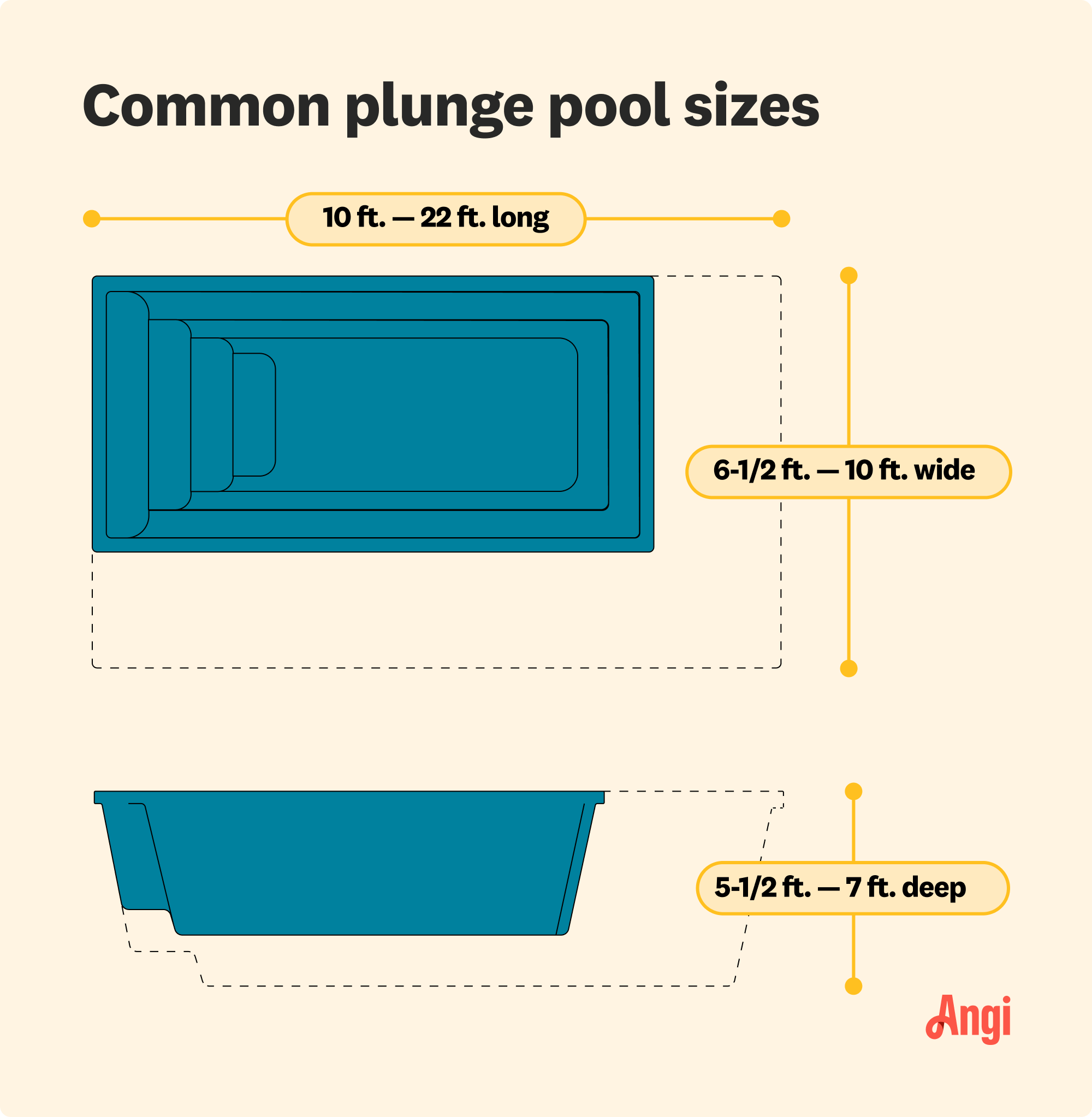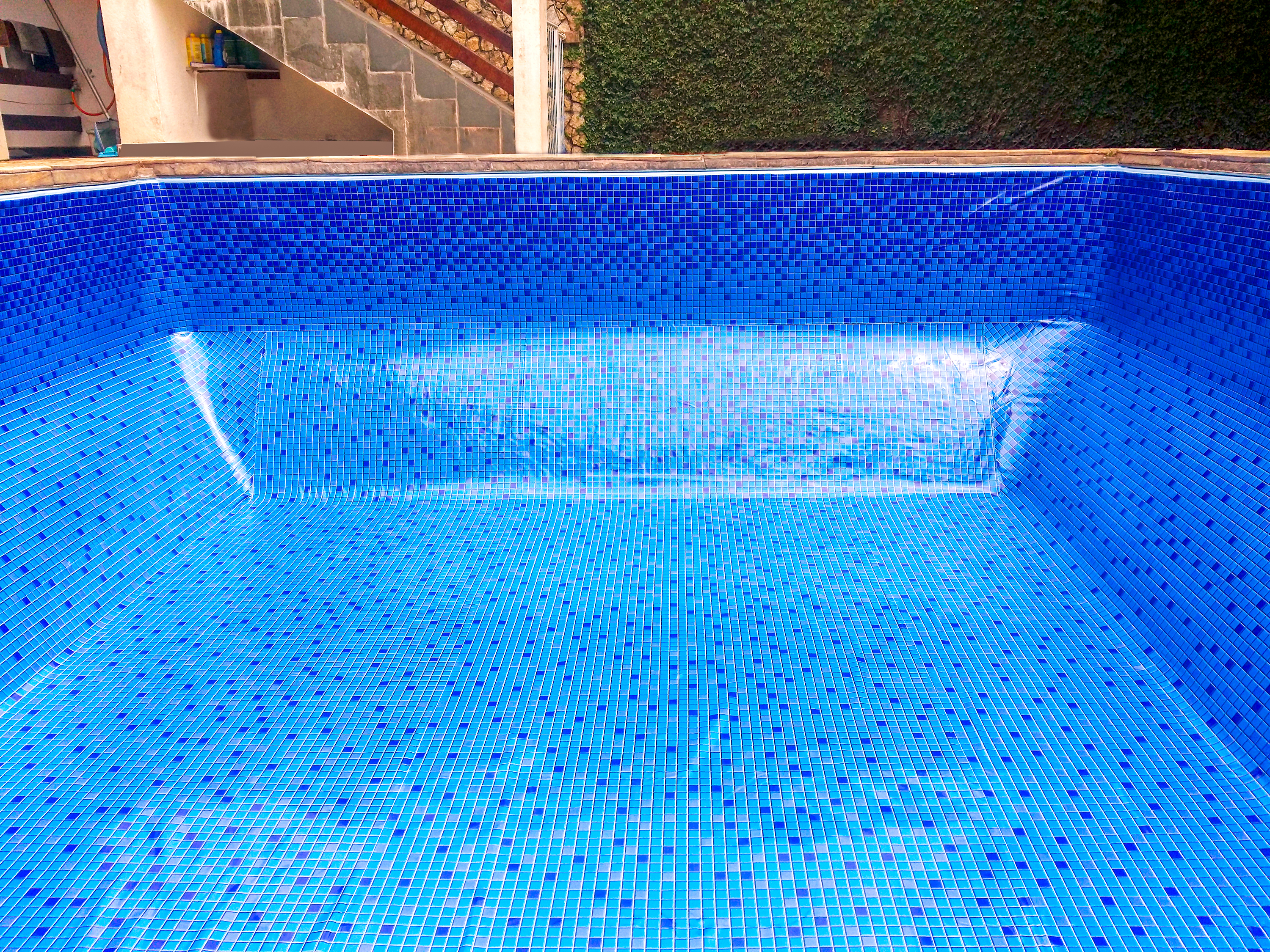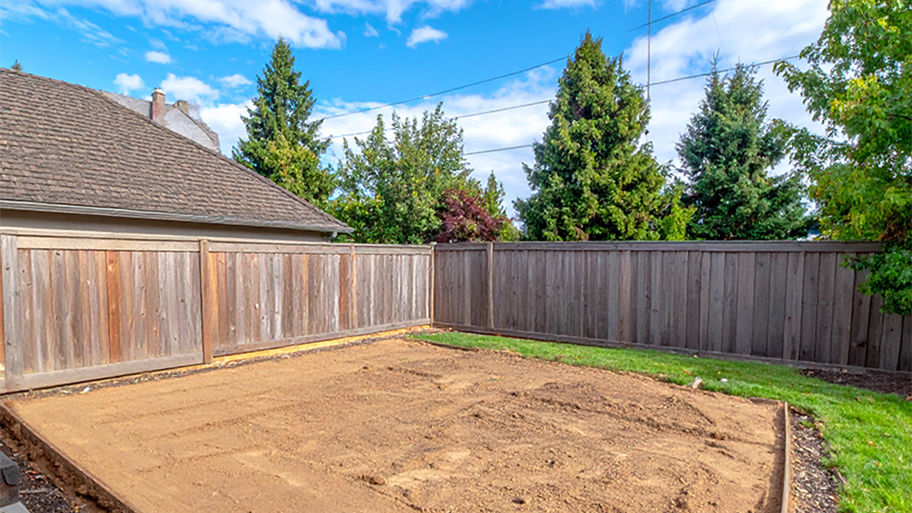
If you’ve been considering installing a new pool in the Buckeye State, this guide will help you understand inground pool costs in Columbus.
Small pools with big benefits


Plunge pools are smaller alternatives to typical inground pools.
These pools are usually 4 to 8 feet deep.
You can add seating, jets, or heaters to plunge pools.
Plunge pools aren’t ideal for doing laps.
If you’re looking for a way to cool off in your yard without breaking the bank (or breaking a sweat doing laps), you should consider a plunge pool. But what is a plunge pool, exactly? This type of inground pool is meant for taking a refreshing dip without taking up a lot of yard space. Let’s dive into what to know about this unique home upgrade, including plunge pool sizes, depths, and costs.
A plunge pool is a miniature version of a traditional swimming pool. These small pools are perfect for wading, lounging, exercising, and cooling off on a warm summer day. The typical dimensions of a plunge pool are 10 by 20 feet around and 6 feet deep, so they can fit almost any yard.

Plunge pools offer just enough space to relax and cool off, usually about 8 by 8 feet to 8 by 16 feet—but some reach as large as 8 by 24 feet in size. They are designed to be a smaller alternative to a standard pool size, better for finding some respite from the summer heat or doing some water aerobics rather than swimming laps.
Made more for a quick plunge than a deep dive, plunge pools are about 4 to 8 feet deep. You may want about 4 or 5 feet deep if you plan to just sit or stand in the pool, while a 6- to 8-foot depth may be a better option if you want to exercise in your plunge pool.
The main difference between a plunge pool and a regular pool is the depth. Plunge pools are between 4 to 8 feet deep and stay uniform throughout the entire length of the pool. Regular pools may go to the same depth (or deeper), but the depth changes depending on the pool length.
Plunge pools are generally much smaller than a regular pool as well, making it a fit for smaller yards or backyards where you don’t want to give up too much square footage.
Outside of size, plunge pools can come with many of the same features as a regular pool, including stairs, lights, heating, and more.
Though they can look similar in pictures, plunge pools and hot tubs are two different units. The biggest difference is that hot tubs have multiple spa jets while plunge pools typically don’t.
Additionally, hot tubs are meant to stay around 100 degrees, while most plunge pools stay at regular pool temperatures—between 65 and 80 degrees. Plunge pools are also slightly larger and deeper than hot tubs.
You may also hear people talk about a spool (or cocktail pool), which is essentially a smaller pool with spa-like features, but usually stops around 3 to 4 feet in depth. Spools can cost more than a plunge pool, but about the same as a hot tub, depending on the size and features added.
Considering a plunge pool for your home? If you’re on the fence, these benefits may be enough to persuade you.
Small yard? An inflatable kiddie pool doesn’t have to be your only choice. The compact size of a plunge pool can fit in yards of all sizes.
A plunge pool requires fewer materials and less labor to build, making it significantly less expensive when compared to full-size pools.
Full-size swimming pools require frequent and time-consuming maintenance. While plunge pools still require skimming and filter checks, they take a fraction of the time to fully clean.
Because of its compact size, a plunge pool takes less time to heat—whether by natural warmth and sunlight or by a pool heater.
For most people, a comfortable swimming temperature ranges between 78 to 82 degrees Fahrenheit. If installing a heater, talk to your electrician or pool contractor about how this may impact your electrical bill.
Plunge pools are great for getting in low-impact exercise at home since the buoyancy of the water lessens the pressure on your joints. Though these pools are smaller, there’s still enough room to break a sweat with a water aerobics workout. If this type of workout is one of the main reasons you’re considering a plunge pool, you’ll want to go with one that’s about 5 feet deep, depending on your height.
Though there are several advantages to installing a plunge pool, there are a few drawbacks to consider, especially if you have children.
The quality that draws homeowners toward a plunge pool can also be the biggest drawback. Having a small pool can be extremely convenient if you have a small backyard, but it’s important to ask yourself if the limited size is practical for your needs. Do you have a large family or entertain often? A plunge pool may not be big enough to accommodate everyone who wants to relax poolside.
Swimming space is limited in a plunge pool. These pools are meant for soaking more than swimming. If you’re looking for a compact pool you can swim in comfortably, consider going with a lap pool.
It’s hard for anyone—especially kids—to resist making big splashes, but a plunge pool is too narrow and shallow to dive into safely. It's even a bit too small to comfortably cannonball in. Take this potential hazard into consideration before deciding to install a plunge pool.
Plunge pools are distinct for their compact size, but there are different types of plunge pools to consider before making a decision.
The common plunge pool is inground and placed in the backyard. Popular dimensions are 10 by 20 feet around and 6 feet deep.
Some plunge pools will make up in depth what they lack in length and width. Some deep plunge pools extend up to 8 feet deep.
Plunge pools are easy to install indoors because of their compact size. Turn your sunroom, basement, or pole barn into a fun pool area you can enjoy all year long.
While the majority of plunge pools are inground, it’s possible to have an above ground plunge pool. These types of plunge pools are typically lap pools or large tubs used for ice bath therapy.
Lap pools are designed for low-impact exercise to relieve pressure from the joints. In this type of plunge pool, large jets create a strong current to swim against. Lap pools are typically shallow enough to also do water aerobics depending on your height.
Infinity pools are small inground pools on a deck or a hillside. Water flows over the side of the pool closest to the edge of the deck or hill, making the pool appear as though it expands to the horizon.
While plunge pools are significantly smaller and require less water than regular pools, this backyard feature is still an investment. Plunge pools cost $10,000 and $50,000, as compared to typical inground pool costs, which is between $39,000 and $70,000. Keep in mind that adding water features, a pool deck, and opting for intricate pool designs will put your plunge pool at the higher end of this range.
Before you call a local pool installation pro to build you a plunge pool, you should ask yourself a few questions:
Do I need a fun and comfortable way to exercise at home?
Do I have a small space in my yard that can accommodate a plunge pool?
Am I okay with not being able to freely swim around the pool?
Do I feel comfortable having this pool around my children and pets?
Am I confident that I will not regret opting for a larger pool with more space?
Here are some other considerations to keep in mind when deciding on whether or not to install a plunge pool.
While a plunge pool costs less than a standard inground swimming pool, you’ll still want to budget about $10,000 to $50,000 for this project. Make sure to consider ongoing costs for pool maintenance, like electricity to power the heater and filter or regular cleanings.
You can build a plunge pool that is only about 8 by 8 feet and 4 feet deep if you are tight on space in your backyard. Also consider any additional space you’ll need to install a deck or patio, fencing, or a pool shed around the plunge pool.
If you have young children or pets, you’ll need to keep added safety precautions in mind before installing a plunge pool. Any amount of water can be a drowning risk for kids and animals, so you may want to wait to install a pool until the kids are older or until you can install the pool and a locked, gated fence around the pool.
If you want a pool to swim laps or host pool parties, a plunge pool may not be right for you. These pools typically only hold around three to five adults comfortably, and they aren’t deep enough for diving or swimming. But if you want a place to read your favorite novel or practice some water aerobics, a plunge pool could be the perfect size for your recreational needs.
Paul Pogue contributed to this piece.
I had Ace Fireplace Services install custom chimney caps for my home, and the results are stunning. They fit like a glove and have added a touch of sophistication to my chimney. I can't recommend their services enough.
I first met Ilia when windows were installed on my new back porch. He was extremely conscientious about getting the job done right and it was. Now I ve had all the windows of two levels of my house completed by him.....ON TIME, ON BUDGET, TO MY TOTAL SATISFACTION. I'm a happy customer.
AFS was excellent from start to finish. Jess, the sales associate, was fantastic...very knowledgeable and very professional. The installation crew was excellent. I couldn't be more pleased with the process. Best of all, my new floor looks fantastic!
They did a great job and were easy to work with. They thinned the trees out while leaving a pleasing shape and setting them up for the next several years. They cleaned everything up and couldn't have been nicer.
I've been around the block myself many times and know most of the lingo, angles, tricks and traps of contracting work on a home. And, I've taken the community school contracting licensing classes and heard contractors discuss openly and candidly trade practices and tales both good and bad. ...
Everyone I talked to at the company, including the people on the phone and the installers, were courteous and polite. All my contact with them has been good. If people like that worked at AT&T, they would make more money. With me and the people on the phone and with the installers, there was...
From average costs to expert advice, get all the answers you need to get your job done.

If you’ve been considering installing a new pool in the Buckeye State, this guide will help you understand inground pool costs in Columbus.

The cost of pool liner replacement in Columbus depends on the size and shape of your pool, as well as the liner material and type. Here’s how the costs break down.

Pool heater problems could point to many issues, some of which you can troubleshoot. Find out repair costs for heat pumps, natural gas, and solar pool heaters.

A pool cover protects against debris and temperature changes while also preventing accidents. This guide breaks down the five main types of pool covers to choose from.

Elevate your swimming experience with a DIY pool heater. This guide includes four methods for using the sun's energy to warm your water.

You can build an above ground pool on uneven ground if you take the time to level it. This guide will show you how to level ground for a pool in a few easy steps.